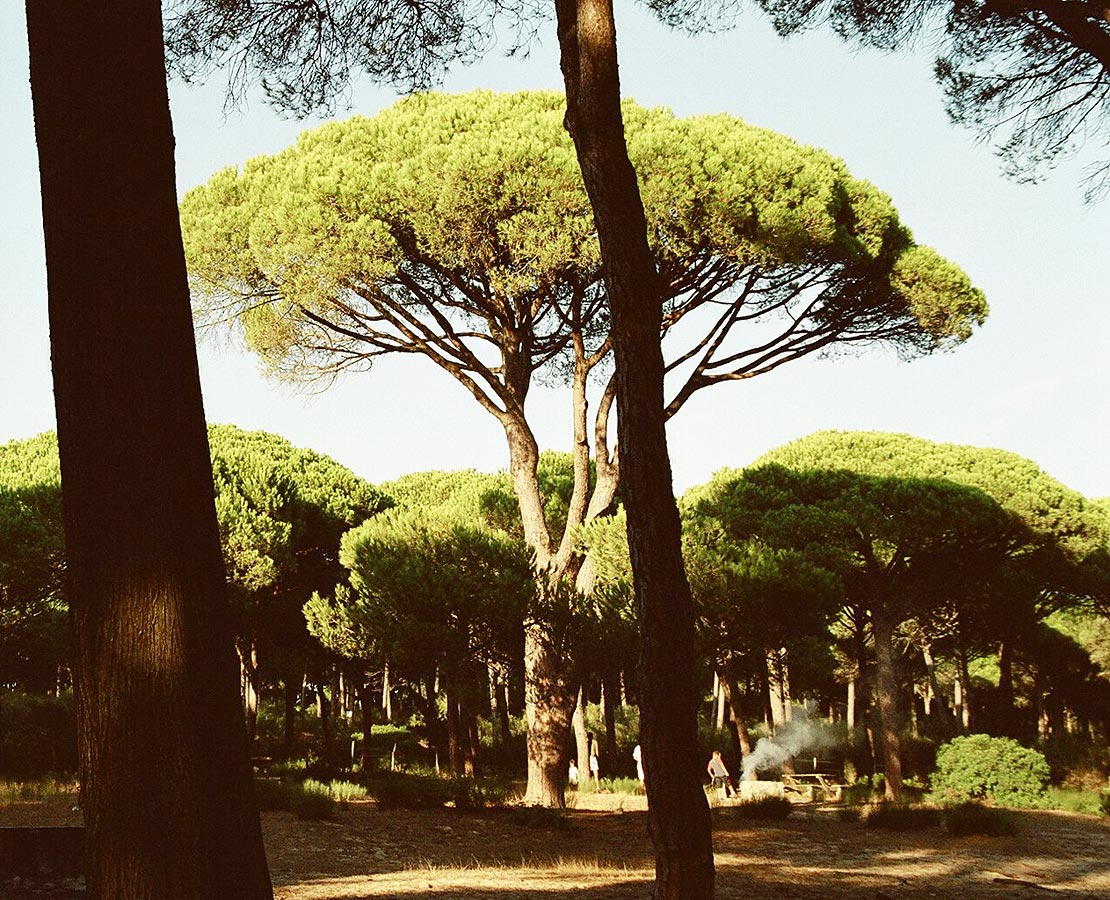- Stone Pine
Taxobox
name = Italian Stone Pine
status = LR/lc | status_system = IUCN2.3

image_width = 240px
image_caption = Stone Pine forest
Costa de la Luz,Spain
regnum =Plant ae
divisio =Pinophyta
classis = Pinopsida
ordo =Pinales
familia =Pinaceae
genus = "Pinus"
subgenus = "Pinus"
species = "P. pinea"
binomial = "Pinus pinea"
binomial_authority = L.The (Italian) Stone Pine (or Umbrella Pine) ("Pinus pinea"; family
Pinaceae ) is a species ofpine native ofSouthern Europe in theMediterranean region . Thistree has been exploited for its ediblepine nut s since prehistoric times. It is also a widespread horticultural tree, besides being cultivated for the seeds.The Stone Pine can exceed 25 m height, though is usually rather less tall, 12-20 m being more normal. It has a very characteristic umbrella-like shape, with a short trunk and very broad, smoothly rounded to nearly flat crown. The
bark is thick, red-brown and deeply fissured into broad vertical plates. The flexible mid-green leaves are needle-like, in bundles of two, and are 10-20 cm long (exceptionally up to 30 cm). Young trees up to 5-10 years old bear juvenile leaves, which are very different, single (not paired), 2-4 cm long, glaucous blue-green; the adult leaves appear mixed with juvenile leaves from the fourth or fifth year on, replacing it fully by around the 10th year. Juvenile leaves are also produced in re-growth following injury, such as a broken shoot, on older trees.The cones are broad ovoid, 8-15 cm long, and take 36 months to mature, longer than any other pine. The seeds (
pine nut s, "piñones", "pinhões" or "pinoli") are large, 2 cm long, pale brown with a powdery black coating which rubs off easily, and have a rudimentary 4-8 mm wing which falls off very easily. The wing is ineffective for wind dispersal, and the seeds areanimal -dispersed, originally mainly by theazure-winged magpie , but in recent history, very largely byhuman s.The original range Stone Pine included Spain, Portugal and North Africa including major parts of the Sahara Desert, especially Morocco, Algieria, Tunisia and Libya, when it was a more humid climate. It has been cultivated extensively for at least 6,000 years for the edible seeds. These have beentrade items since early historic times. It is cultivated and oftennaturalised throughout theMediterranean region, for so long that it is often considered native, while more recently (since about1700 ) been introduced to other areas with Mediterraneanclimate s. It is now naturalised inSouth Africa (where it is listed as aninvasive species ) and commonly planted inCalifornia ,Australia , and westernEurope north to southernScotland . On theEast Coast of the United States , it can survive as far north asNew Jersey , though it will usually suffer significant damage to its foliage during winter that far north. Small specimens are grown in large planters or are used forBonsai , and year-old seedlings are also widely sold as 20-30 cm tall table-topchristmas tree s.The Stone Pine has also been called Italian Stone Pine, European Nut Pine, Umbrella Pine (not to be confused with the Japanese Umbrella-pine) and Parasol Pine. It has also occasionally been listed under the invalid name "Pinus sativa".
References
*
Wikimedia Foundation. 2010.
